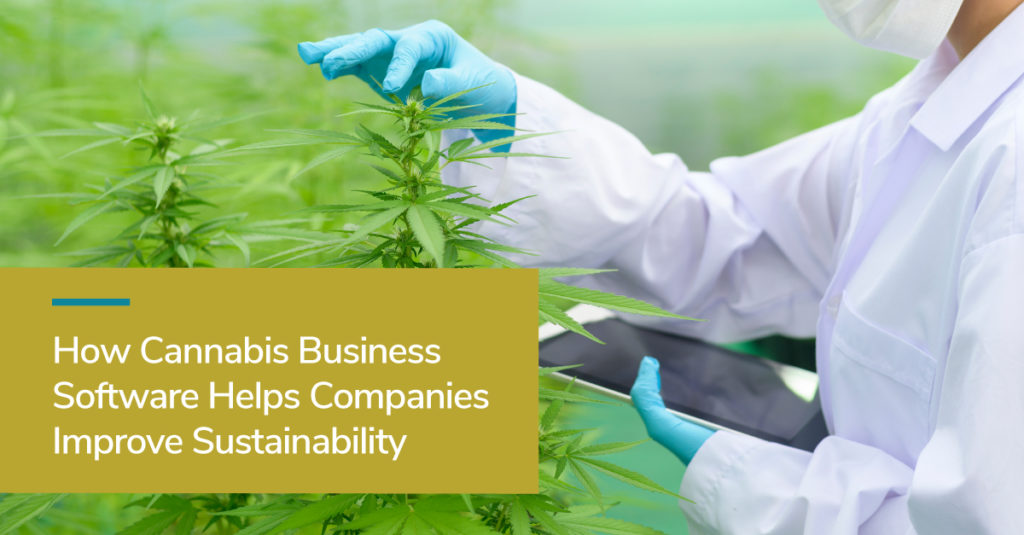
Every year since 1974, millions of people in over 150 countries have celebrated World Environment Day on June 5th. Led by the United Nations Environment Programme (UNEP), It’s been—and continues to be—a global effort to encourage businesses, including those in the cannabis industry, to continue reducing their environmental impact.
Unfortunately, improving the sustainability of cannabis cultivation operations isn’t easy, nor does it necessarily jive with a business’ need to be profitable. Even so, Av Singh, cultivation expert at Nova Scotia-based Flemming & Singh Cannabis, told MJBizDaily’s Bart Schaneman, “Balancing the health of the pocketbook with the health of the planet is a step that all cannabis facilities should consider regardless of their own worldviews, because it just makes sense.”
Building a sustainable business does make sense. Cannabis businesses will not only reduce waste and ensure a safer and brighter future for generations to come, but they’ll also appeal to their customers, who are increasingly choosing to spend their money with eco-friendly businesses.
Let’s take a look at a few of the non-eco-friendly cultivation practices found in the cannabis industry, how cannabis businesses can implement a more responsible approach and how to simplify the sustainability process with cannabis business software.
Tips to turn your cannabis business into an eco-friendly business
- Packaging/Plastics
According to a Hemp Foundation guide, the cannabis cultivation process produces 150 million tons of yearly plastic waste. Plastic is used in weed growth suppression, in growth containers and in PVC irrigation pipes. A Forbes article also notes that plastic is used in the individual packaging of cannabis products.
To reduce plastic waste and environmental threats, such as plastic residue in the soil and water, there are a few practical solutions. Many growers are using natural mulch to cover the cannabis rows, fabric bags instead of plastic growing pots, metal or concrete pipes, and recyclable materials (e.g., glass bottles) for packaging.
- Energy Consumption
While outdoor cannabis farms do not use much energy, the same cannot be said for indoor cannabis facilities. An ElectricityPlans article reveals that “grow room electricity used for commercial cannabis production is now estimated at 1% of all electricity used in the USA.”
What causes the massive energy drain? Lighting systems, exhaust fans, watering systems and HVAC systems running on a continuous basis. To reduce their energy consumption, cannabis businesses can switch to LED lighting, use skylights in appropriate areas, build a more insulated facility, pay attention to peak power demand pricing and ensure the equipment being used fits their operational needs.
- Water Consumption
As with energy, cannabis operations require a lot of water. An MJBizDaily article by Laura Drotleff addresses the high demand for water, citing three Illinois State University researchers who studied the environmental impact of cannabis cultivation. Drotleff writes, “They found that the water demand for growing cannabis typically exceeds that of commodity crops by nearly double. On average, the researchers found a cannabis plant consumes an estimated 22.7 liters, or 6 gallons, of water per day during the growing season, which is typically 150 days long from June through October.”
With an eye towards sustainability, cannabis businesses are employing water-saving processes. For instance, recycling wastewater, conserving water through moisture sensors, choosing drought-resistant strains, utilizing nutrients and supplements to reduce heat stress (and thus reduce water usage) and more.
Achieving Sustainability with CannaBusiness ERP
More and more states and countries are beginning to legalize cannabis, increasing the industry’s size and popularity. To succeed in the competitive market, cannabis companies must not only focus on cultivating and selling a high-quality product, but they must also focus on how their actions—from the amount of plastic they use and the water and energy they consume to how they deliver their products—affect the environment.
CannaBusiness ERP, built in Sage X3 and configured by NexTec experts, is a single, end-to-end system designed specifically for the cannabis cultivation and processing industry and helps businesses with their finance and operations, seed-to-sale, quality and compliance, and traceability management needs. It also delivers the technology required to implement and support environmentally sustainable initiatives.
For example, when replacing plastic with alternative items, cannabis businesses can use the cannabis business management software to help manage suppliers, track resources and monitor inventory. By storing their supplier, resource and inventory data in a centralized location, businesses can make better and faster decisions and track inventory movement with advanced lot traceability functionality.
Reducing energy and water consumption requires a number of strategies, and CannaBusiness ERP can help businesses track how well the strategies are—or are not—working. Additionally, CannaBusiness ERP can help cannabis operators plan optimal delivery routes, reducing their fuel usage (and costs), as well as their total carbon output, in the process. To learn more about achieving sustainability with CannaBusiness ERP, contact our experts today. We’d love to chat and to set up a demonstration.
